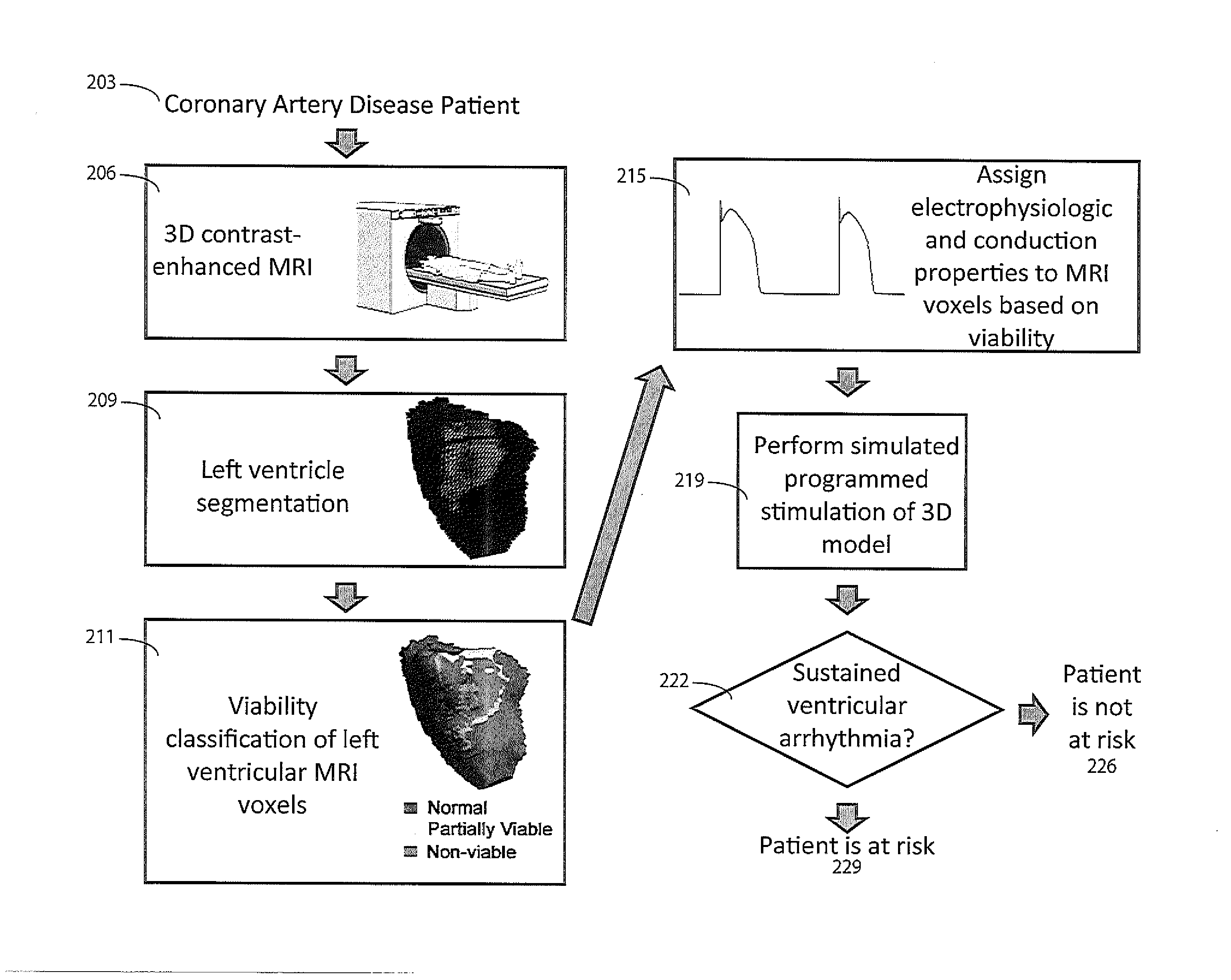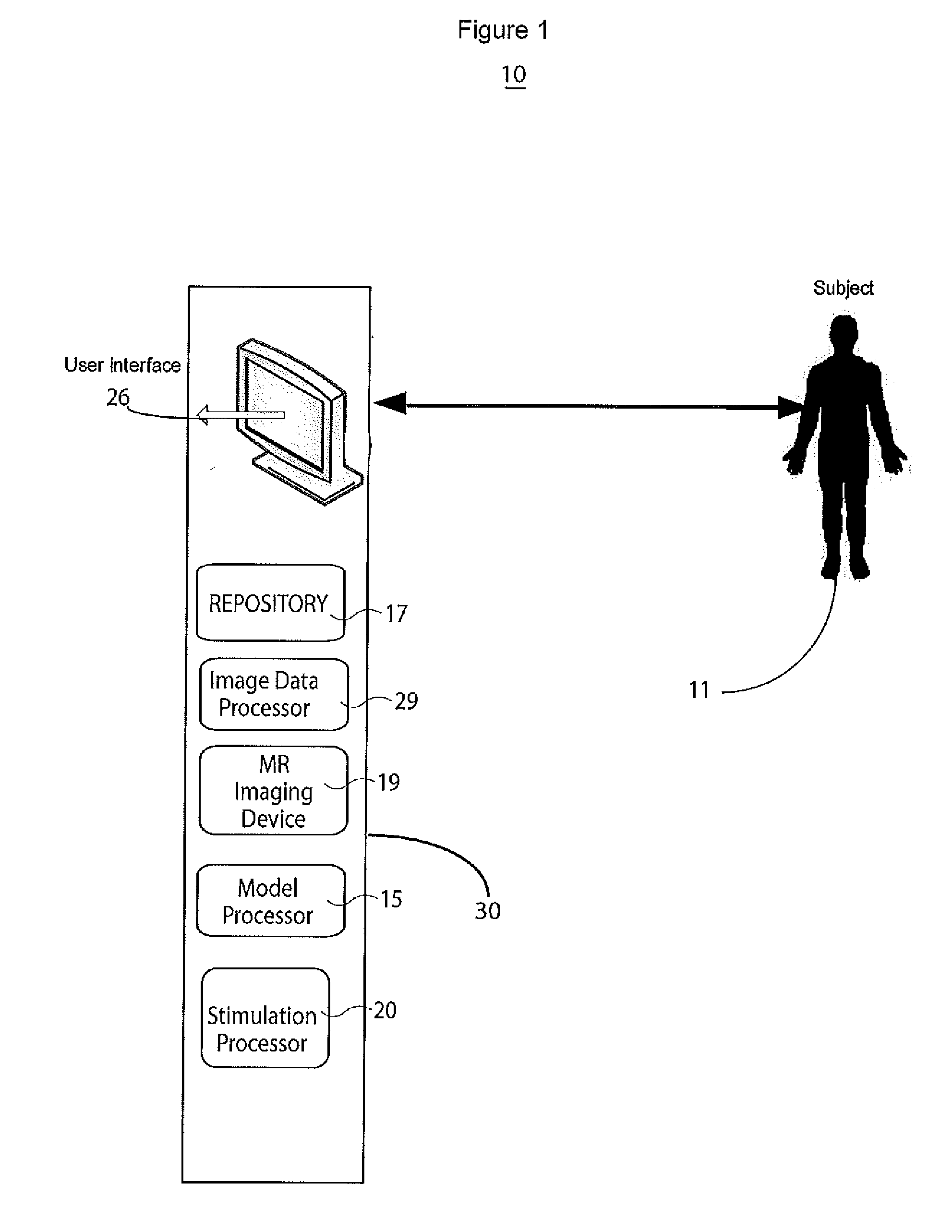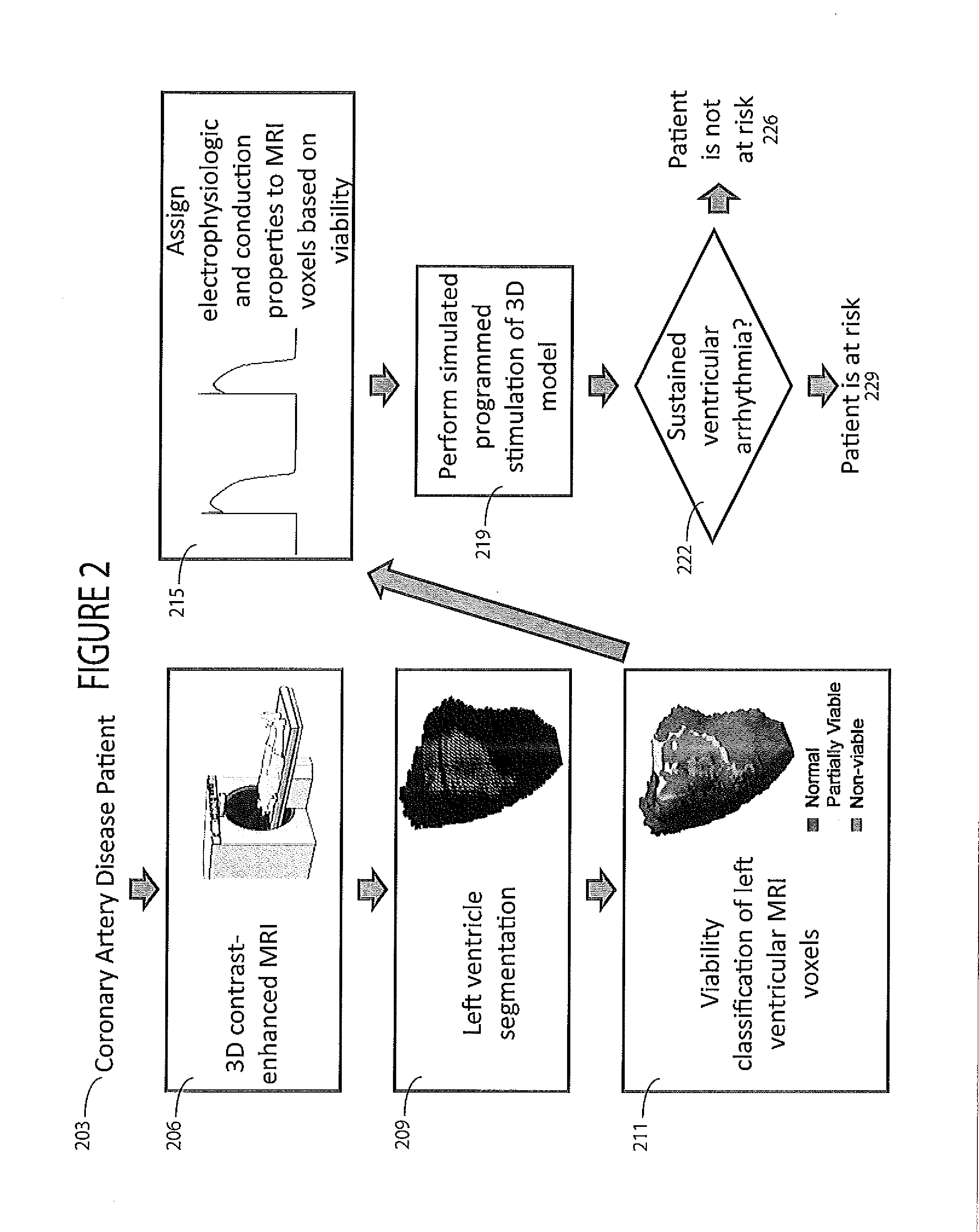Electrophysiologic Testing Simulation For Medical Condition Determination
a technology of electrophysiology and simulation, applied in the field of system for cardiac function analysis, can solve the problems of poor survival rate of cardiac arrest out of hospital, inability to accurately distinguish low risk group from high risk group, and complex circuits
- Summary
- Abstract
- Description
- Claims
- Application Information
AI Technical Summary
Problems solved by technology
Method used
Image
Examples
Embodiment Construction
[0019]A system simulates stimulation of scar tissue using a 3D heart model derived from cardiac imaging so that hyper-enhanced areas in a medical image (greater than 3 standard deviations from normal myocardium luminance level) are detected using variable luminance thresholds and partially-viable myocardium is categorized as distinct from non-viable scar tissue. In one embodiment a computer action potential model (e.g., a Fenton-Karma model) is used to simulate activation and conduction in viable zones of a 3D left ventricle (LV) geometry. The system performs computer simulation of cardiac electrophysiology using three-dimensional models obtained by in-vivo MRI and is usable to evaluate whether an infarct is sufficient to support ventricular tachycardia (i.e. virtual electrophysiologic testing).
[0020]Mapping of ventricular tachycardias in an electrophysiology laboratory identifies various potential components of a cardiac circuit including a central isthmus, inner loop, and outer lo...
PUM
 Login to View More
Login to View More Abstract
Description
Claims
Application Information
 Login to View More
Login to View More - R&D
- Intellectual Property
- Life Sciences
- Materials
- Tech Scout
- Unparalleled Data Quality
- Higher Quality Content
- 60% Fewer Hallucinations
Browse by: Latest US Patents, China's latest patents, Technical Efficacy Thesaurus, Application Domain, Technology Topic, Popular Technical Reports.
© 2025 PatSnap. All rights reserved.Legal|Privacy policy|Modern Slavery Act Transparency Statement|Sitemap|About US| Contact US: help@patsnap.com



